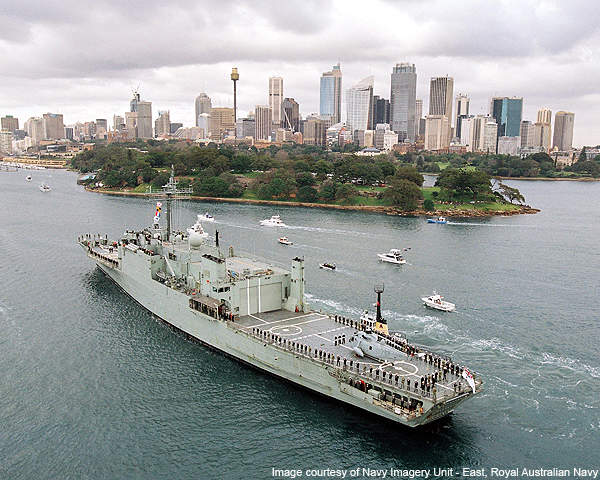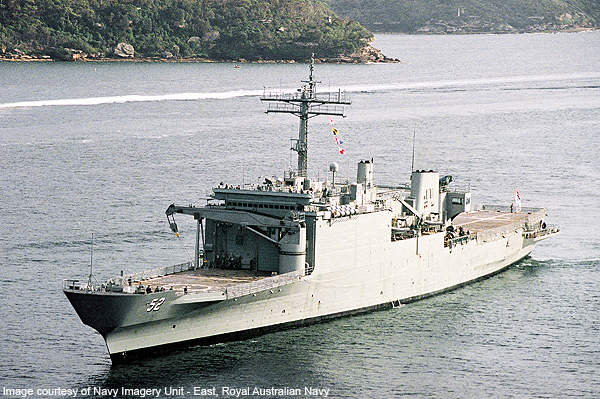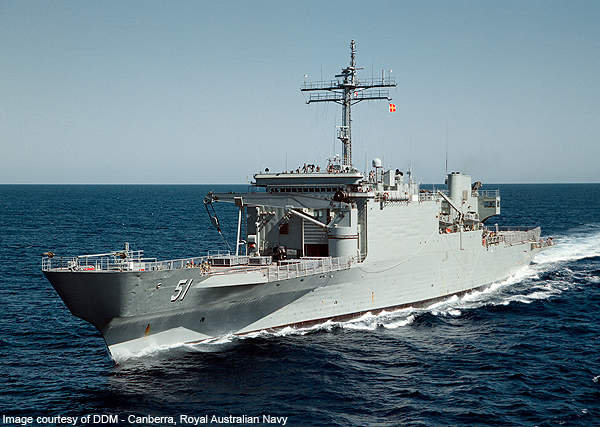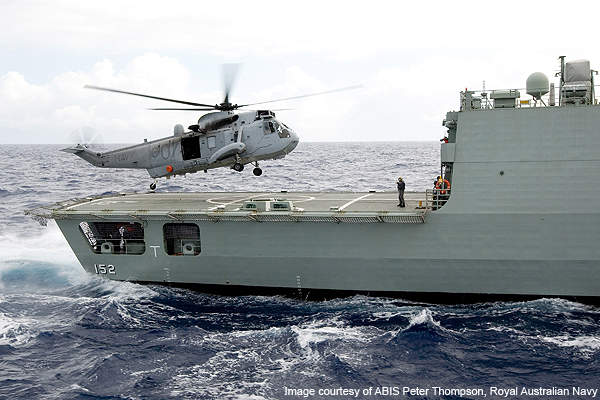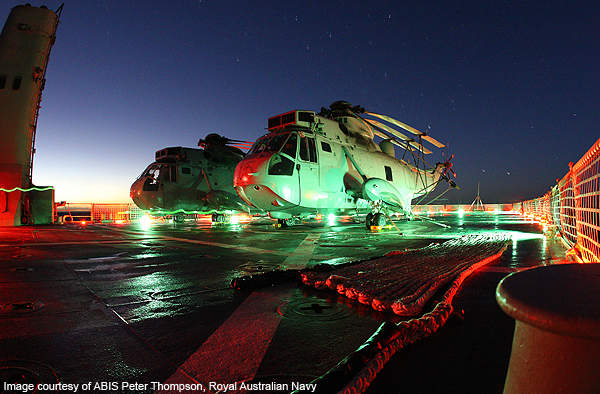Two Kanimbla Class landing platform amphibious ships are in service with the Royal Australian Navy (RAN). The ships were originally built as Newport Class tank landing ships for the US Navy by the National Steel and Shipbuilding Company. Both ships were transferred to the RAN in 1994.
The keel for the first ship in the class, HMAS Kanimbla (ex-USS Saginaw) was laid in May 1969. It was launched in February 1990 and commissioned into the US Navy in January 1971. It was recommissioned into the RAN in August 1994.
The second ship, HMAS Manoora (ex-Fairfax County) was laid in March 1970. It was launched in December 1970 and commissioned into the US Navy in October 1971. It was recommissioned into the RAN in November 1994.
Kanimbla Class ships are based at Fleet Base East. The ships primarily operate in South East Asian regions and are deployed during regional emergencies. They have actively participated in the Afghanistan and Iraq wars, and provided humanitarian relief during 2004 Indian Ocean tsunami and the East Timor 2006 political crisis.
In September 2010, both ships arrived at Fleet Base East for an "operational pause" after identifying corrosion in the ship hull and faults in propulsion, crane, communication system and air-conditioning. They underwent an unscheduled $17m refit at Garden Island dockyard in Sydney, completed in early 2011.
The vessels are due to be replaced by two 28,000t Canberra Class amphibious ships by 2015.
Kanimbla Class conversions
Kanimbla Class ships underwent extensive modifications after arriving in Australia. Both ships were converted from tank landing type to amphibious warfare transport type at Forgacs Dockyard by 1999. The bow doors, derrick and tank ramp were removed, an aft helicopter deck was strengthened and a hangar was added during the conversion.
The deck forward of the superstructure was modified to carry two LCM-8 landing craft and a single 70t crane was installed for launch and recovery of landing craft. Accommodation facilities were provided for up to 450 soldiers. Improved medical facilities and a modern galley were installed. A 40-bed hospital consisting of full surgical and recovery facilities was fitted.
More operations and planning rooms were added to accommodate an amphibious group commander and a landing force commander during army and navy exercises. Comprehensive and modern communications equipment onboard complements these joint operations.
Cargo capacity
Kanimbla Class ships are designed to transport, lodge ashore and support an army contingent of 450 troops, their vehicles and equipment.
The ships can carry two army LCM8 landing craft on the forward flight deck to provide ship to shore transport. The craft can be lifted on and off by a 70t crane. Around 810m² of storage space is provided on the vehicle deck for army vehicles and other large equipment. The space is accessed through a stern door.
Armament
The main gun is a 20mm Phalanx mk15 close-in weapon system (CIWS). It consists of a computer controlled, radar-guided 20mm gatling gun mounted on a swivelling base. It can fire at a rate of 75 rounds per second (4,500 rounds a minute). It provides point defence against incoming anti-ship missiles and artillery fire.
The ship is also armed with six 12.7mm machine guns.
Aviation facilities
The Kanimbla Class features three helicopter landing spots, two aft and one forward. The helicopter hangars onboard are capable of storing up to four army Blackhawk or three navy Sea King helicopters. Two helicopters can take off and land simultaneously from the aft flight deck, while a third can operate from the flight deck located forward of the bridge.
The ship can also support the operations of Chinook helicopters.
Propulsion
The Kanimbla Class is powered by six ALCO V16 diesel engines arranged in a two shaft configuration. Each engine delivering a power output of 2,750hp provides a maximum speed of 22kt and a maximum range of 14,000nmi at 14kt speed.

